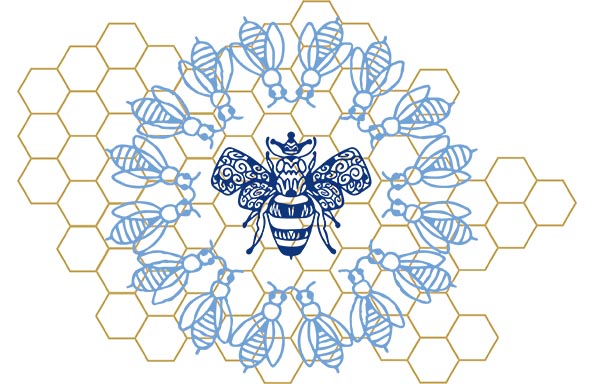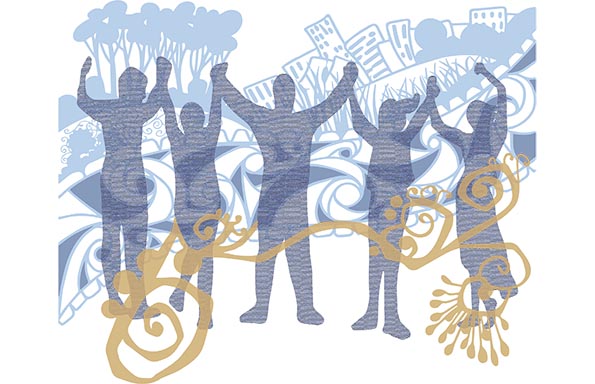Community hubs: Ten strategies for sustainability

The University of Liverpool’s Dr Kerry Traynor, co-author of the ‘Community hubs: Ten strategies for sustainability’ report, explains how a community hub in one of the most disadvantaged communities in England is scaling up sustainability through assets, ethos and lean thinking.
In a context where 43% of businesses fail[1] within five years, 12% fail annually[2], and the most deprived 30% communities own just 18% of community assets[3], we set out to explore the factors that help community hub businesses develop sustainability, what hinders it, and what could be done to improve things.
One community hub organisation that’s doing pretty well is Safe Regeneration[4]. Established in 2000, Safe now owns and manages two community hubs - a creative enterprise hub and community pub The Lock and Quay[5] in Bootle, part of the Liverpool city region. It has achieved a fair level of sustainability in terms of the usual organisational metrics such as jobs, turnover and assets, but also in a more holistic sense in terms of the way it values those it engages with and prioritises social, cultural and environmental impact over organisational development.
What is also striking is the scalability of the approach – Safe is now leading on development of the UK’s largest community-led housing initiative comprising 200 homes, a new creative enterprise centre, canalside pub, micro-brewery, mooring facilities and geothermal energy supplies. The £30m Destination Bootle[6] scheme is expected to significantly scale up impact, turnover and assets within Safe, securing a highly sustainable community hub for generations to come.
As a researcher at the University of Liverpool, and as a trustee of Safe, I was keen to work with Brian Dawe, the founder and CEO, and others to share the lessons learned through Safe’s first 20 years, with the aim of supporting and inspiring other hub leaders in their own journeys towards sustainability. The research team spent six months closely observing what goes on within Safe and across its network, and interviewing employees, trustees, partners and community hub leaders from elsewhere in the region.

What did we find?
We identified ten strategies that underpin sustainability. The most crucial is a shared understanding amongst all involved that operating a community hub is a business operation integrating strong social values into commercial activities. This dual mission is evident in all Safe’s activities from delivering participatory arts workshops, to business support, to health and wellbeing services, to community music festivals, to the new housing development – products and services have to be commercially viable as well as create positive social, cultural or environmental impacts.
Another crucial factor underpinning sustainability is Safe’s generous leadership - an approach which offers constructive advice, support and mentoring, encourages a high degree of autonomy, sets few rules and is reluctant to direct or interfere. This approach is applied not only to individual beneficiaries and partners but with other community businesses and hubs across the region, helping to create a sector with high levels of trust and cooperation.
Generous leadership enables Safe itself to commit to lean principles in relation to its own organisational development. Lean principles mean organisational growth has been deliberately constrained with both workforce and overheads tightly controlled. Rather than grow the organisation unnecessarily, the majority of activities are delivered through a complementary network of interdependent organisations that work together like the parts of a wheel, with Safe as the hub of the wheel and a range of consortium members acting as the spokes.
This structure enables Safe to offer a diverse range of services, more than 20 on-site, far in excess of the average of nine identified in previous studies[7]. This helps to address the complex and varied needs of the local community, and enables the core team to focus on innovation and development of new products and services. This has enabled the organisation to build the confidence to take well-managed risks to acquire and manage multiple revenue-generating assets which improve the physical environment and offer social and economic benefits to the community and the consortium.
What’s also interesting about Safe is the way it uses social and hyperlocal media to engage and build communities. This is an area that many community businesses struggle with[8], so it’s been interesting to explore how Safe has found ways to reach both large and targeted audiences using a blend of regional, hyperlocal and social media, often in partnership with others that can help extend their reach.
What’s next?
Our main recommendation is to encourage hub leaders and practitioners to consider whether the strategies that have defined Safe’s journey towards sustainability could help your organisation on its journey. We’d be really interested to find out if the factors we identified are important in other contexts and settings.
We’d like to see a community hub leadership development programme established to nurture the next generation of community hub leaders to grow and support the sector and encourage peer learning and collaboration.
We’ll also be encouraging commissioners in anchor institutions (such as local and combined authorities, universities and colleges, and healthcare providers) to consider the leadership role that community hubs can play within the rich and diverse community business sector, and to actively engage with them to explore partnership and procurement opportunities.
Finally, we hope that further research will develop understanding of community hubs, there’s so much more to learn about this exciting sector, particularly in relation to leadership and asset acquisition and management.
If you’re interested in finding out more about the research or community hubs, read the report here. If you have any questions or thoughts, we’d love to hear from you, please email ktraynor@liverpool.ac.uk.
[1] ONS (2018) Business demography: 2017. Available at: https://www.ons.gov.uk/businessindustryandtrade/business/activitysizeandlocation/bulletins/businessdemography/2017#focus-on-employer-demography
[2] House of Commons Library (2018). Business Statistics Briefing Paper No. 06152. 12. December 2018
[3] Archer, T., Batty, E., Harris, C., Parks, S., Wilson, I., Aiken, M., Buckley, E., Moran, R. and Terry, V. (2019) Our assets, our future: the economics, outcomes and sustainability of assets in community ownership. London: Power to Change. Available at https://www.powertochange.org.uk/wp-content/uploads/2019/07/Assets-Report-DIGITAL-1.pdf
[4] https://www.saferegeneration.org.uk/
[5] https://www.facebook.com/lockandquaybootle/
[6] http://destinationbootle.org.uk/
[7] Trup, N., Carrington, D. and Wyler, S. (2019) Community hubs: Understanding survival and success. Available at: https://www.powertochange.org.uk/wp-content/uploads/2019/07/Hubs-Report-FINAL-120719.pdf
[8] Higton, J., Archer, R., Steer, R., Mulla, I. and Hicklin, A. (2019) The Community Business Market in 2019. London: Power to Change. Available at: https://www.powertochange.org.uk/research/community-business-market-2019/